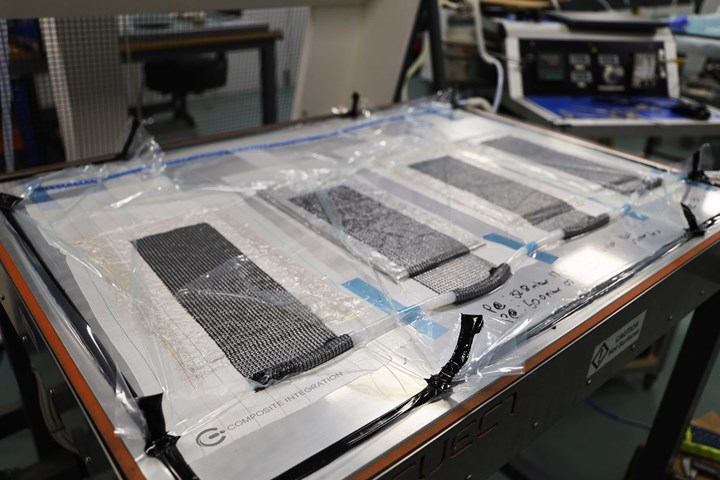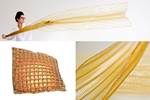Composites Integration evaluates fiber, resin systems to reduce environmental impact of composites
Collaboration with the School of Engineering at the University of Plymouth looks at the effect of pre-processing and post-processing techniques on low-carbon materials.

Composite Integration evaluates a range of natural, renewable and recyclable fiber and resin systems. Photo Credit: Composites Integration
As part of Composite Integration’s (Saltash, U.K.) long-term “Clean Composites” research and technology strategy, the company has placed an emphasis on understanding materials which can reduce the environmental impact of composite structures and components. In particular, the company is evaluating a range of natural/renewable/recyclable fiber and resin systems to ensure that it can provide comprehensive processing guidance to clients and partners.
The challenge of recycling traditional glass/carbon fiber polyester/epoxy composites are well known, says the company. The need exists to understand the processing requirements for a much wider range of fiber and resin systems, not only to ensure that Composite Integration’s Ciject RTM/VRTM injection equipment is capable of processing them, but also to understand the processing parameters to mold components successfully.
To support this work, Composite Integration is working with the School of Engineering at the University of Plymouth, an institution with a long pedigree of both research and undergraduate teaching in the field of composite materials. Placement Engineer, Joe Searle, is currently carrying out both detailed research into available materials as well as practical processing evaluation trials.
“The project focuses on identifying how we can produce high-quality ‘clean’ composites,” Searle says. “The project has looked at the effect of pre-processing and post-processing techniques on a wide variety of low carbon materials. Composite Integration has given me an opportunity to build my dissertation. Being able to use the experience and knowledge of the team at Composite Integration made researching the project significantly simpler.”
While the whole challenge of moving to a carbon-neutral manufacturing environment is a complex one, Composites Integration notes, it is clear that many small steps can be made to move in the right direction. By understanding how to work with lower impact materials through the “Clean Composites” strategy, Composite Integration aims to progress steadily toward this goal.
Related Content
-
The making of carbon fiber
A look at the process by which precursor becomes carbon fiber through a careful (and mostly proprietary) manipulation of temperature and tension.
-
Why aren't composites synonymous with infrastructure?
The U.S. seems poised to invest heavily in infrastructure. Can the composites industry rise to the occasion?
-
Plant tour: Dowty Propellers, Gloucester, U.K.
Transforming decades of design and RTM production reliability into more sustainable, next-generation composite propellers.
















